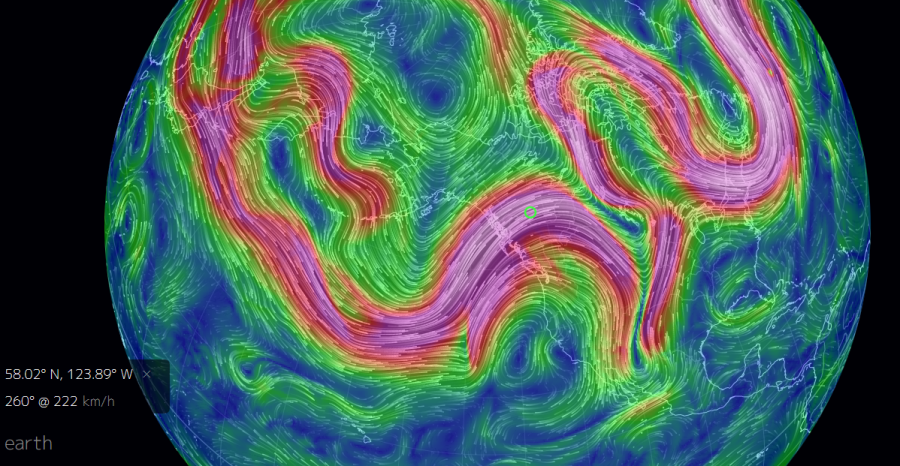La Nina Fizzles, Pacific Hot Blob Returns, Record Global Heat Likely to Remain
A
change of three degrees [Celsius] is an “extraordinary deviation —
something you would expect to happen once in a millennium.”
*****
34
September, 2016
Four
degrees Celsius. That’s the current deviation from the 1981 to 2010
average for sea-surface temperatures over a broad region of the
northeastern Pacific, a
deviation you typically wouldn’t see once in a thousand years.
During
2013 to 2015 a similar warm-up over this same region of water
occurred. Such extreme heat at the ocean surface generated mass loss
of sea life. Numerous species from plankton to krill to copepods to
starfish and many more on up the food chain were impacted. This great
ocean warming also sparked losses of ocean oxygen off Oregon and
Washington, pushing waters there into low-oxygen and anoxic states.
These states, though they do not support advanced ocean life, tend to
support anaerobic microbes that produce various toxins (including
hydrogen sulfide gas). At the same time, atmospheric circulation was
also impacted, resulting in unprecedented drought conditions for
California as
a ridiculously resilient ridge of high pressure settled in.
(Region
of the northeastern Pacific about the size of the state of Washington
shows ridiculously hot sea-surface temperatures in the range of 4
C above average. Such once-in-a-thousand-years ocean-surface
heat has now occurred for three out of the past five years. As end
2016 nears, this unprecedented blob of hot ocean-surface waters
appears to be returning. Image source: NOAA
ESRL.)
Such
a terrible blow to ocean health combined with ever-more-extreme
atmospheric conditions are the very hallmarks of a heating climate.
As a result, the events associated with the 2013-2015 hot blob will
likely, in future years, be seen as one of the warning shots across
North America’s bow — an indication that climate change-related
impacts were about to seriously worsen.
Hot
Blob Re-Forms as La Nina Splutters
Now,
after a one-year hiatus, the hot blob is back and northeastern
Pacific sea-surface temperatures are again on the rise. A
previously-predicted La Nina is abruptly spluttering out, apparently
crushed by a periodic warming of the northeastern Pacific called the
Pacific Decadal Oscillation (PDO). This natural variability-related
feature is combining with climate change-induced ocean warming to
again push ocean surface temperatures into unprecedented ranges.
(The
northeastern Pacific hot blob is a climate change-related feature
that contributes to record heat, drought and wildfire risk for
California. Over the coming week, the re-formed hot blob appears
ready to plunge the state into 90 to 1oo degree (F) conditions —
which will intensify wildfire risk for the state. Image
source: Pivotal
Weather.)
With
the PDO again firing up, the hot blob re-forming, and La Nina
starting to splutter, we can expect global temperatures to remain
closer to the record-hot levels achieved during 2015 and 2016. This
is bad news in that 2017 through 2022 might see another record-hot
year coordinate with El Nino, which would push even closer to 1.5 C
and 2 C climate thresholds — a clear sign that the age of fossil
fuel exploration and burning needs to end as swiftly as possible if
livable climate conditions are to be maintained.
Nearer-term,
if this heat in the northeastern Pacific remains in place, we can
expect worsening hot and dry conditions for the U.S. west coast even
as sea life in the affected region again falls under threat. With
global temperatures now hitting a range of 1.2 C or more above
1880s averages, there is risk that this event could match or even
exceed the related harmful impacts seen during the 2013 to 2015
timeframe.
(Unusual
high-amplitude Jet Stream ridging over the U.S. west coast like that
predicted for Sunday in the GFS model run is associated with both
extreme sea-surface temperatures in the northeastern Pacific [the hot
blob] and sea-ice loss in the Arctic, both caused by global warming
due to fossil-fuel burning. Note the numerous additional powerful
ridge and trough formations running downstream of this unusual Jet
Stream feature. Image source: Earth
Nullschool.)
Climate
Change Links Again Non-reported by Media
Despite
an obvious relationship between global warming and extreme regional
heating events like the hot blob, some
prominent media sources continue to link the formation of the hot
blob to natural variability without mention of climate change.
To do so fails to tell the whole story. Without that 1.2 C warming of
the Earth since the 1880s due to our rampant burning of fossil fuels,
we would not be seeing so much heat piling up in the northeastern
Pacific. As such, the PDO has been put into a kind of climate change
hyperdrive. And that’s what’s creating conditions under which
these big, dangerous ocean hot blobs continue to row.
Links:
Hat
tip to DT Lange
Hat
tip to Greg
Hat
tip to Colorado Bob






No comments:
Post a Comment
Note: only a member of this blog may post a comment.